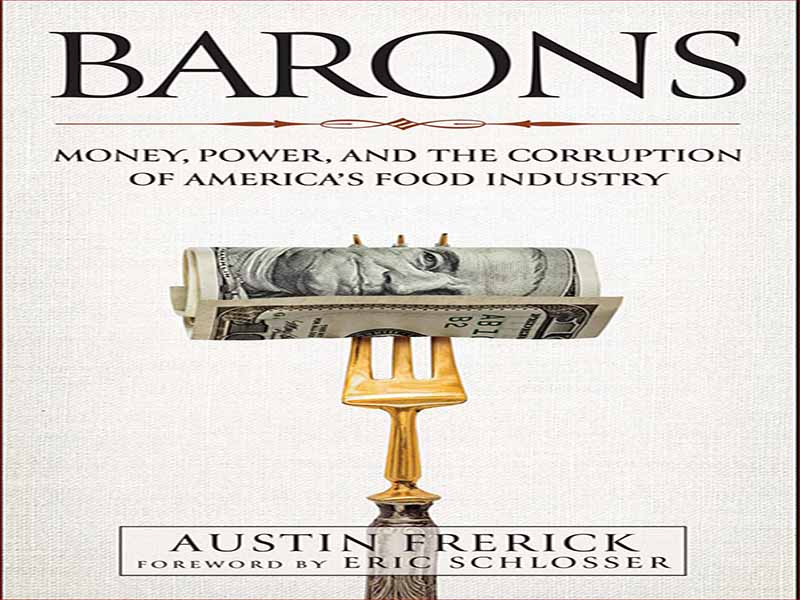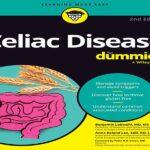- عنوان کتاب: Barons / MONEY, POWER, AND THE CORRUPTION OF AMERICA’S FOOD INDUSTRY
- نویسنده: Austin Frerick
- حوزه: فساد مالی
- سال انتشار: 2024
- تعداد صفحه: 274
- زبان اصلی: انگلیسی
- نوع فایل: pdf
- حجم فایل: 1.99 مگابایت
وقتی جوان بودم، من و خانواده ام در گوشه ای از شمال شرقی آیووا که به منطقه بدون رانش معروف است، به دیدار اقوام می رفتیم. همانطور که از میان تپههای سرسبز رانندگی میکردیم، از پنجره به مراتع پر از گاوهای شیری و گراز خیره میشدم. البته ذرت رایج بود، اما باغهای سیب و سایر محصولات نیز رایج بودند. منظره علی ای بود. من هنوز به Driftless می روم. پدر و مادر من کمپ خود را تا به امروز در آنجا پارک می کنند. اما زمین در حال حاضر قهوه ای و بایر است، مگر در چند ماه از سال که ذرت و سویا رشد می کنند. این دو کالا مانند یک دشت پراکنده شده اند، و سیب و سایر محصولاتی که قبلا در سراسر ایالت کشت می شدند، اکنون از خارج از مرزهای آن تامین می شوند. جاده به Driftless قبلا از میان شهرهای کوچک پر جنب و جوش عبور می کرد، اما از آن زمان توسط بزرگراه های چند میلیون دلاری که فقط برای این ساخته شده بودند که این کالاها بتوانند چند دقیقه سریعتر از ایالت خارج شوند، دور زده شده اند. مشاغل محلی بسته شده اند و زنجیره های ملی در حومه شهر جایگزین شده اند. ایالتی که زمانی از آن به عنوان “سرزمین میانه” یاد می شد – هم به دلیل موقعیت جغرافیایی اش درست در قلب قاره ایالات متحده و هم به دلیل سیاست معتدل و طبقه متوسط قوی – اکنون با چشم انداز سیاسی ارتجاعی و رو به زوال آن تعریف می شود. شهرها وحشتناک ترین تغییر این است که حیوانات از نظر ناپدید شده اند. در یک نقطه، آنها شروع به ناپدید شدن کردند: اول خوک، سپس گاو. انبارهای قرمز رنگی که قبلاً آنها را در خود جای می داد رها شده یا برای کاشت ذرت یا لوبیا بیشتر خراب شده اند. اما حتی اگر دیگر آنها را نمی بینید، گرازها از بین نرفتند. وقتی چند مایلی خارج از شهر میشوید، شروع به حس کردن میکنید – ابتدا بو و سپس میبینید – دستهای از آلونکهای عظیم بدون پنجره. شما هرگز حدس نمی زنید که هر یک از آنها تقریباً 2500 خوک را در خود جای می دهد، تا زمانی که بوی غلیظ کود در سمت شما پیچید. در این مرحله، روستا آنقدر صنعتی است که دیگر اصلا شبیه روستا نیست. من در ابتدا تصمیم گرفتم این کتاب را به عنوان راهی بنویسم تا بفهمم که چرا وضعیت خانه من از زمان کودکی من تا این حد تغییر کرده است. کشاورزی برای آیووا همان چیزی است که فیلم های سینمایی برای هالیوود، سنگ بنای اقتصاد ایالت و ریشه هویت آن هستند. این ایالت دارای برخی از بهترین خاک های جهان است: “طلای سیاه”، که همراه با بارندگی مداوم خوب، شرایط کشاورزی ایده آلی را ایجاد می کند. می خواستم بفهمم که این نعمت در چهل سال گذشته چگونه به نفرین تبدیل شده است. اما وقتی این سوال را بررسی کردم، برایم روشن شد که این تأثیرات بسیار فراتر از مرزهای ایالت است. تحقیق و نگارش این کتاب مرا به سراسر کشور برد، از دره پاجارو در کالیفرنیا گرفته تا بقایای مرداب بزرگ کانکاکی در ایندیانا و از بیابان های نیومکزیکو تا شهرهای پررونق شمال غربی آرکانزاس. اگرچه این داستان در دل خود یک داستان آمریکایی است، اما مکانهایی به دوردستهایی مانند اگزیکو، آلمان و برزیل را در بر میگیرد.
When I was young, my family and I would visit relatives in a corner of northeast Iowa known as the Driftless region. As we drove through green rolling hills, I’d stare out the window at pastures dotted with dairy cows and hogs. Corn was common, of course, but so were apple orchards and other crops. The landscape was ali e. I still go up to the Driftless; my parents park their camper up there to this day. But the land is now brown and barren, except during the few months of the year when corn and soybeans grow. These two commodities have spread like a prairie fi e, and the apples and other crops that used to be grown all over the state are now sourced from well beyond its borders. The road to the Driftless used to pass through vibrant small towns, but they’ve since been bypassed by multimillion-dollar highways that were built only so these commodities can leave the state a few minutes quicker. Thelocal businesses have closed, replaced by national chains on the outskirts of town. A state that was once referred to as the “Middle Land”—both because of its geographic location right in the heart of the continental United States and because of its moderate politics and strong middle class—is now defined by its reactionary political landscape and decaying towns. The most jarring change is that the animals have disappeared from view. At some point, they started vanishing: first pigs, then cows. The red barns that used to house them sit abandoned or have been knocked down to plant more corn or beans. But even though you no longer see them, the hogs aren’t gone. When you get a few miles outside town, you begin to sense—first smell, then see—clusters of massive windowless sheds. You would never guess that each one of them holds almost 2,500 pigs, until the thick stench of manure wafts in your direction. At this point, the countryside is so industrial that it no longer feels like countryside at all. I initially set out to write this book as a way to figu e out why my home state has changed so dramatically since my childhood. Agriculture is to Iowa what motion pictures are to Hollywood, the cornerstone of the state’s economy and the root of its identity. The state is blessed with some of the world’s best soil: “black gold,” which, coupled with consistently good rainfall, makes for ideal farming conditions. I wanted to understand how this blessing has, over the past forty years, turned into a curse. But as I dug into that question, it became clear to me that these impacts go far beyond the state’s borders. Researching and writing this book has taken me across the country, from the Pajaro Valley in California to the remnants of the Grand Kankakee Marsh in Indiana and from the deserts of New Mexico to the booming towns of Northwest Arkansas. Though it’s an American story at its heart, it’s one that involves places as far-flung as exico, Germany, and Brazil.
این کتاب را میتوانید از لینک زیر بصورت رایگان دانلود کنید:
Download: Barons / MONEY, POWER, AND THE CORRUPTION OF AMERICA’S FOOD INDUSTRY




































نظرات کاربران